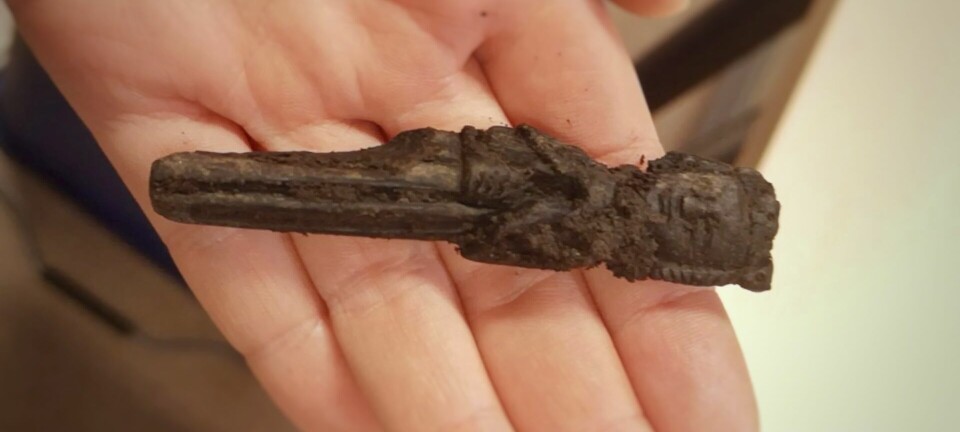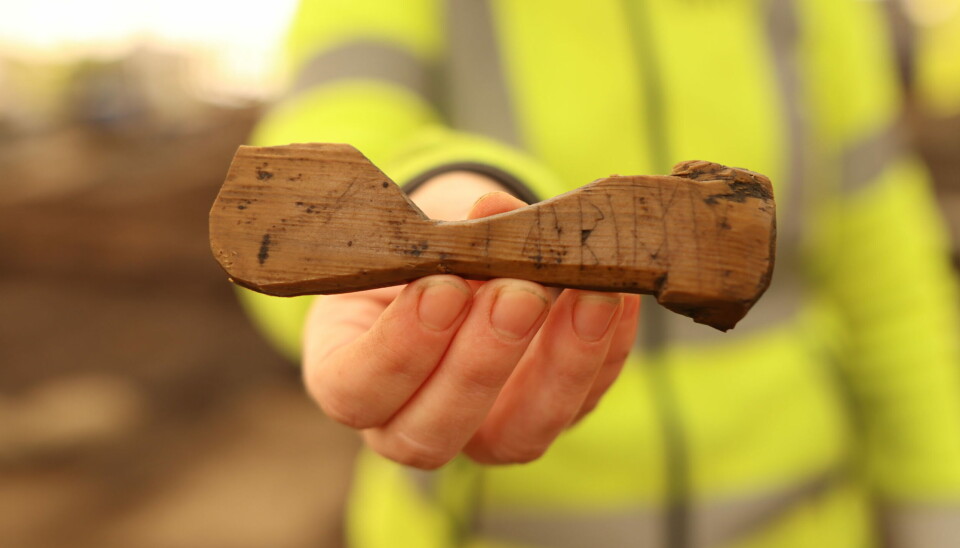
New runic find from medieval Oslo – this time it’s a name tag
Asbjørn put his name on it, 800 years ago.
The small piece of wood is about 11,4 centimeters long and is roughly carved with eight runes that follow the shape of the wood. This tells us that the runes most likely were carved after the piece of wood was cut out.
It was found in the same layers as a knife handle in the shape of a king with a falcon, which suggests that it is from around 1200.
“I was hoping there would be more runic inscriptions!”, runologist Kristel Zilmer from the University of Oslo says in a press release from the Norwegian Institute for Cultural Heritage Research (NIKU).
Just before Christmas, the ongoing dig at the Medieval Park in Oslo unearthed a bone and a stick inscribed with runes. In one of them, also interpreted by professor Zilmer, Bryngjerd said something about hands and the lord, a prayer or perhaps a message that she had given her life to the service of God.
The new find is of a more pragmatic sort. It’s a medieval name tag.
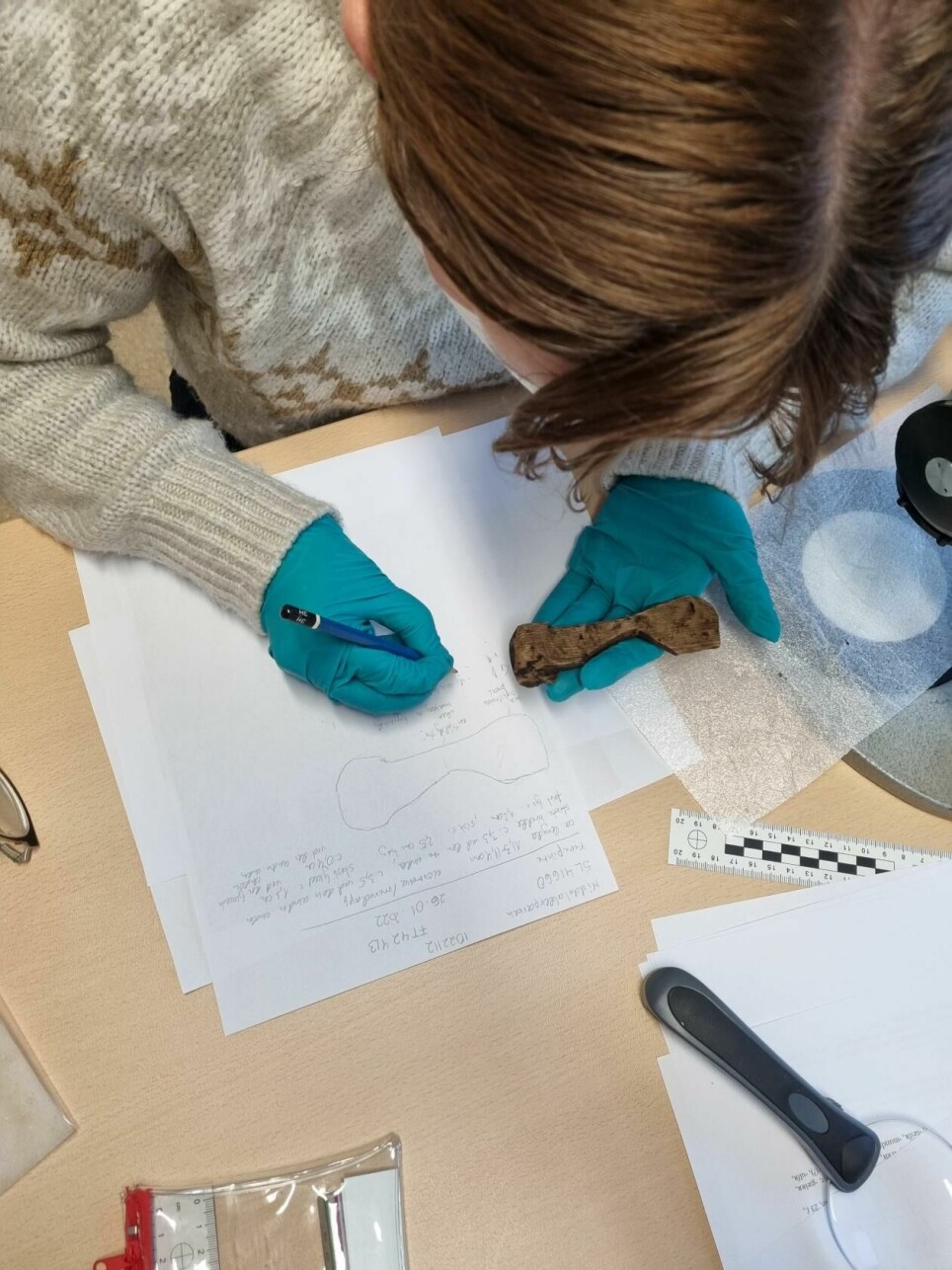
A common medieval thing
The inscription most likely contains the name Ásbjǫrn, followed by 'a mik', which means "owns me", runologist Zilmer writes on twitter.

Asbjørn is a common name known through runic inscriptions from the Middle Ages and the Viking Age, NIKU writes in the press release. The name is also known from letters and documents from the Middle Ages, written with Latin letters.
The name itself is a combination of the Norse words for God (Áss) and bear (bjørn).
Name tags, or medieval ownership markers, as the runologist calls them, are a common type of middle age inscriptions. They usually contain a name, as well as the verb ‘owns’. Sometimes we also get to know what was owned.
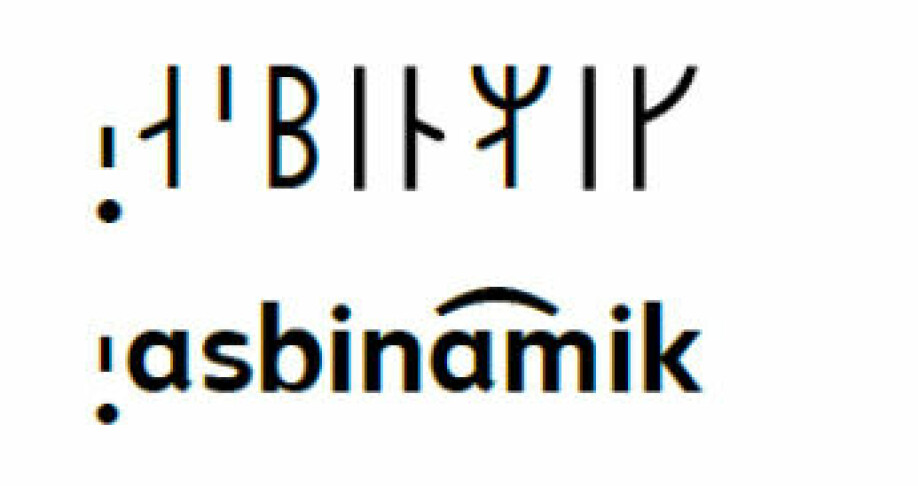
In Norway, name tags like these have mostly been found in Trondheim and Bergen, where they have found more than 100 of them. In Oslo, this new name tag is one of few.
Three runic finds in the same place means there might be more, NIKU writes hopefully in the press release.
“At least it tells us that there are still unread messages hidden in the grounds of the city, “ runologist Zilmer comments.
Zoom in and out and twist the piece of wood around as you wish, in a 3D model created by Ann-Ingeborg Floa Grindhaug from NIKU:
Wine, textiles, or perhaps whetstones?
So what did Asbjørn own then?
We probably won’t ever know for sure, the context of the find doesn’t give many clues. But perhaps it was attached to a batch of goods?
Common goods that were traded in medieval Oslo would have been imported grains, honey, salt, beer or perhaps wine. Or it could have been metal hardware, ceramics, or glass, imported textiles, millstones or whetstones.
“In general, we can assume that trade or storage of goods would have taken place nearby, this wouldn’t be very surprising given that this was a port area”, archaeologist Trond Engen says in the press release. Engen is the field leader of the Oslo Medieval Park excavation.
Craftsmen would have had their stalls along the streets here and sold items like shoes, iron tools and weapons as well as food items like bread, fish, and meat.
Larger batches of goods would have been sold directly from the town houses or from the boathouses.
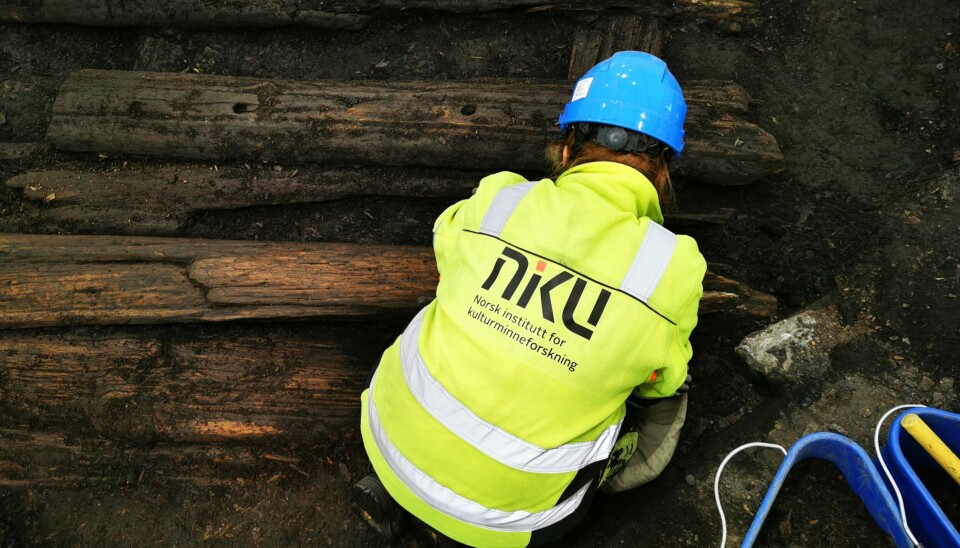
Asbjørn was here
The excavation has also found a large piece of the so-called Klemetsalmenningen, a broad street that ran from the port of Bjørvika to the Alna River.
“Even if we won’t ever know what Asbjørn actually owned, the name tag gives us the name of a real person who lived in Oslo in the 1200s”, the NIKU press release writes, continuing:
“He was perhaps well known in the area and wandered up and down the Klemetsalmenning and around in the harbour. Perhaps he was a tradesman who shopped large quantities down by the piers? The only thing we know for sure, is that Asbjørn owned something which was important enough for him to brand as his property”.








